How to Measure Content Effectiveness?

If you want to improve the visibility of your brand or be ranked higher on Google, then, content marketing is a solution that comes in handy. There must be a reason why companies such as Michelin, Deere & Company, Procter & Gamble, Lego, Microsoft, Nike, or Red Bull have been using content to advertise their brands for so many years now.
How to Measure Content Effectiveness?
According to SEMrush, 77% of the companies have a defined content marketing strategy, and as many as 70% of marketers are inclined to take advantage of content marketing. Let’s check what content marketing actually is and how to measure the effectiveness of your company’s marketing activities.
Content Marketing – What Is It?
Joe Pulizzi, an American entrepreneur, podcaster and creator of the Content Marketing Institute states that:
“Engaging content marketing is a means of making users realize that your product or service is actually what they need.”
It’s hard to disagree with this statement as it turns out that 47% of customers or clients check at least 3-5 products or services created by the company before contacting it.
What are the components of content marketing? Content marketing comprises three basic activities:
- Creating and publishing quality and intriguing content that balances the attractive form and valuable information provided to your potential customers.
- Attracting users’ attention by distributing and advertising content via properly tailored channels.
- Gathering a group of loyal recipients of the content.
Why do you need content marketing?
The ultimate objective of content marketing is to generate the maximum amount of valuable traffic to the site among users at the right stage of the sales funnel. This translates directly into more leads and finally monetizes as specific orders from customers.
The objectives of content marketing
- Improving the effectiveness of your SEO and long-tail SEO activities,
- Attracting users’ attention and interest which leads to monetization.
How To Measure Your Content Marketing Effectiveness?
Determine the KPI with the use of the S.M.A.R.T. method
Contrary to what you may think, all activities related to content can be accurately measured and evaluated. Only well-defined Key Performance Indicators will help you to regularly assess whether you, as a marketer or entrepreneur caring about the marketing of the company, perform the activities properly. How many unique users do you want to attract or how many impressions do you plan to achieve during the first quarter? How much content do you aim to publish annually?
Based on the objectives set previously with the use of the S.M.A.R.T. method, define your plan for evaluating the realization of your objectives and monitoring if you’re getting closer to achieving your goals. Take advantage of Google Analytics and social media data. What parameters should you pay attention to?
Unique users, average web session time, the number of pages visited per one session
All the abovementioned data is available in Google Analytics in the Recipients => Overview tab. The longer a web session and the more pages visited by the users, the greater the probability that your content is valuable and attractive. Remember that your online store or website can benefit from every extra UU (unique user).
A satisfactory number of subpages visited during one web session is tangible evidence of proper internal links placed appropriately in the content of articles or guidelines.
How to improve the parameters?
- Create longer, more engaging content that employs diversified formats (e.g. infographics or videos),
- Take care of proper internal linking.
Bounce Rate vs. Exit Rate
Both of the titular indicators are crucial for the SEO process and content marketing. A bounce rate designates the percentage of users who left a given subpage right after entering it. On the other hand, an exit rate represents people who finished their web sessions on a particular subpage and decided to leave your website.
Obviously you should aim at minimizing both indicators, in this particular case, the fewer, the better.
Real-time active users
When entering the Google Analytics homepage, you can see the current number of users on your website, the exact subpage they’re browsing at the moment, or information describing how they reached you. At this point, you can analyze whether a newly published article or product advertised in social media is a clickbait that immediately engages users and attracts traffic to the site.
How to improve the parameters?
- Share links to your most important subpage in various groups on social media platforms or promote it in your newsletter.
New vs. returning users
To assess this report, go to the tab Recipients => Behavior => New vs. Returning.
Quality content tailored to your marketing personas and recipients translates into a greater number of returning users who revisit your website in order to assess more detailed information.
How to improve the parameters?
- Gather a loyal community that will read your content, no matter whether it’s a newsletter or a text published on a Facebook group.
- Conduct a profound examination of your marketing personas, their needs or interests to create content that meets their expectations.
Acquisition – overview and social networks
Thanks to the report Acquisition => Overview available in Google Analytics you can learn how users arrive at your website or which subpage converts or meets your business objectives best.
With the use of Acquisition => Social Networks => Overview you can see social media platforms from which potential customers reach your website.
The most frequently displayed tabs
In the report Behavior => Website content => All subpages you can check which of your blog posts attract users’ attention most, where visitors spend their web sessions and which texts need to be improved, written from scratch or even deleted if they don’t generate enough traffic or if their bounce rate is too big.
Social media followers
Your website, where potential readers of social media posts, newsletters, or offline articles are redirected, should be the heart of your content marketing activities. However, it’s advisable to continuously devote your time to social media platforms which may help you to gather an engaged community that appreciates the value of your content. A sizable Facebook or LinkedIn group as well as a popular Twitter profile provides you with extra advertising space and gives you the opportunity to share your content marketing activities.
How to get more followers?
- Provide links to your profiles and social media groups in published articles or newsletters (as direct links) and offline resources ( as QR codes on leaflets or catalogs)
- Participate in online discussions and respond to comments from your company account, take advantage of your website content and use it in the appropriate context.
Website and social media comments
The more users triggered to leave comments after reading your content, the better. At this point, it doesn’t really matter whether the reviews are positive or negative (although obviously flattering comments are more beneficial for your brand recognition). Opinions, comments, and reviews stimulate discussion and increase the value of the content. Apart from measuring the efficiency of your content marketing activities, comments can give you valuable feedback concerning your texts and their prospective improvements.
How to get more comments?
- Conclude each article or blog post with a specific CTA (Call To Action) persuading readers to, for example, answer a given question or share their experiences related to a given topic in the comments.
- Make sure that posting reviews on your website is easy and effortless. If possible, don’t make it necessary for users to log in in order to comment on your entries.
Tools That Support Google Analytics In Measuring Content Effectiveness
UTM
Each of your online activities, entries or social media posts should be tagged with special UTMs. But what are they? UTM, meaning Urchin Tracking Module, is a parameter that can be “attached” to a standard URL, so that you can precisely track the website traffic from various sources. Thanks to it, you’ll be able to determine how many people visited your website after seeing a given post or activity and how it affected your conversion.
How to create UTM tags?
If you want to create your own UTM code, you can take advantage of Campaign URL Builder, which is an official Google creator, and “attach” it to your linking. UTM tags can be defined as online assistants that help to assess the effectiveness of various channels through which the website can be reached. They consist of:
- Source – meaning the source of the traffic such as Facebook, Google, Instagram, Quora.
- Medium – it serves as a means for identifying the source of the traffic (e.g. paid traffic, free traffic, traffic from newsletters). The most popular medium tags include CPC, CPM, email, display, blog.
- Campaign – a specific campaign like summer sale or Black Friday.
- Content – indicates which part of the content triggered a given reaction, e.g. the CTA button: buy now.
An exemplary link with UTM tags: https://delante.pl/blogpost-x?utm_source=google&utm_medium=cpc&utm_campaign=brand&utm_content=buynow
Why do you need UTMs?
In Google Analytics, links tagged with the use of UTMs allow you to see which sources and content generate the biggest conversion or traffic to your website or online store.
Internet monitoring
The more frequently your company is mentioned or quoted and the more dofollow links to your online content, the better. As part of developing your content marketing strategy, deploy tools such as Brand24 or SentiOne to take advantage of Internet monitoring. With the use of the abovementioned tools, you’ll easily learn what users write about your company and brand online. However, due to the fact that these tools are paid and advanced, you won’t need them at the very beginning of your content marketing adventure.
SEO monitoring
Tools such as SEMrush, Semstorm, and Senuto allow you to conveniently monitor how your content marketing strategy affects the SEO process of your company.
Competitive monitoring
Stay up to date and check SEO or content marketing steps taken by your market rivals. Follow their company blogs and social media profiles. Moreover, if you want to monitor your competition even more effectively, use tools like SpyFu or Ahrefs.
Is it beneficial to measure content effectiveness?
Definitely! As you can see, the market abounds in various tools designed not only to conduct content marketing activities but also to measure their effectiveness. Moreover, Google Analytics provides its users with so many parameters for free that wasting these resources would be simply irresponsible. Monitor your activities, measure their efficiency and implement improvements to continuously increase the number of unique users and conversions. If you have any questions or would like to conduct a website audit, write to us via the contact form – we’ll answer as quickly as possible.

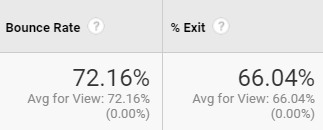
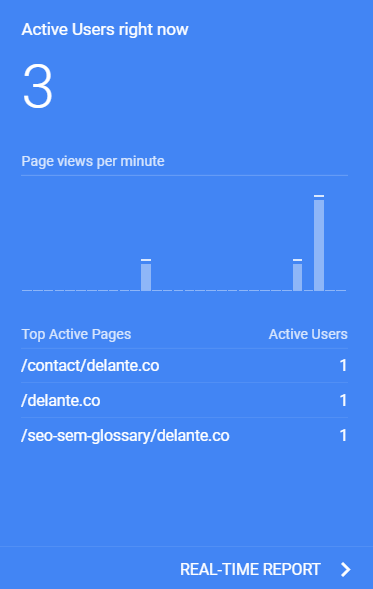
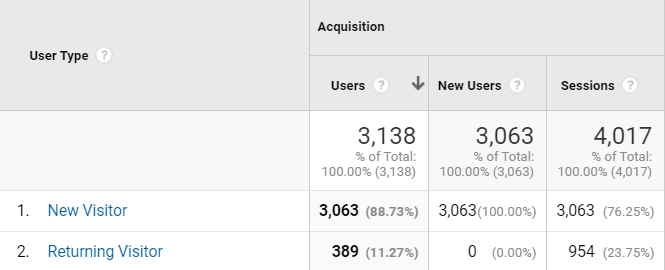
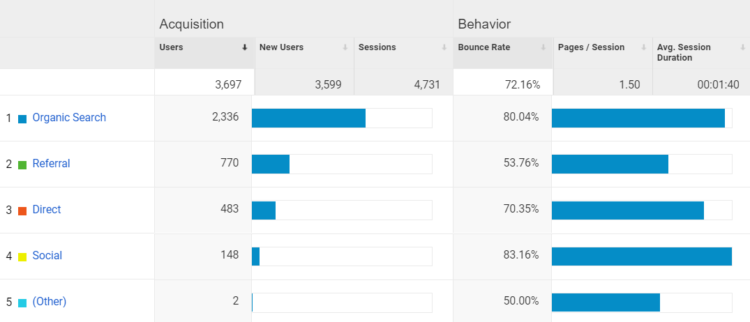
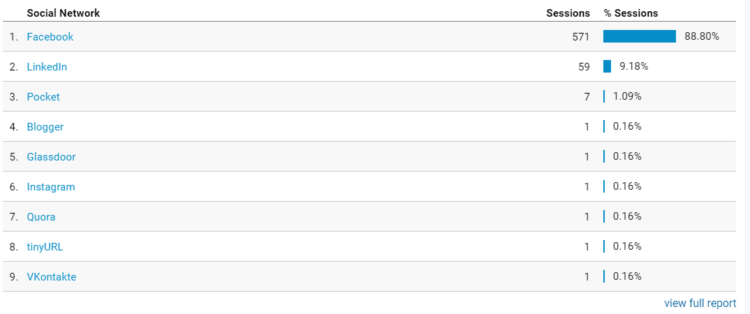




It’s really nice for getting around the whole content analysis process. To be honest I already knew what to measure but the article gave me an opportunity to write it all down and I’m gonna start to really check the effectiveness now, thanks!
Thank you for such a holistic explanation. One of the main mistakes that I made before was that my clients had to log in to leave reviews and ratings. It was rather impractical. It is good to keep a check on our selves once in a while.
Your post was very beneficial to me. Really, I’m still unsure and perplexed about content and content marketing. Your article clarified what constitutes successful content.
Content analysis is very important. Your article helped more to identify how can we check the effectiveness! Thank you! Keep writing more.